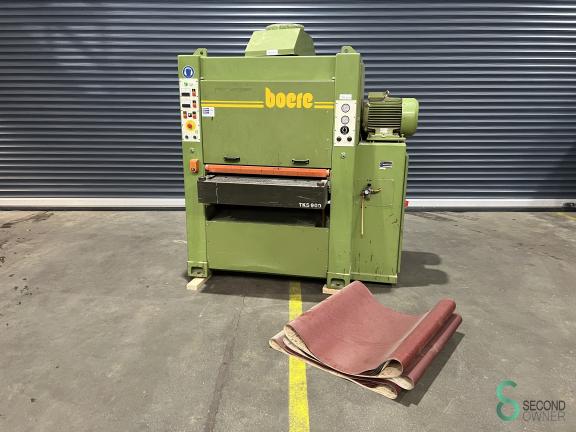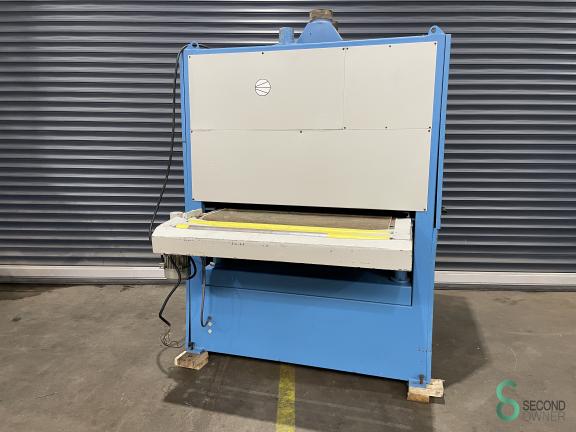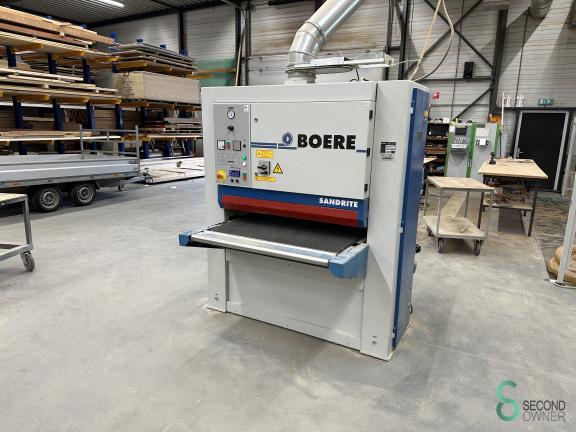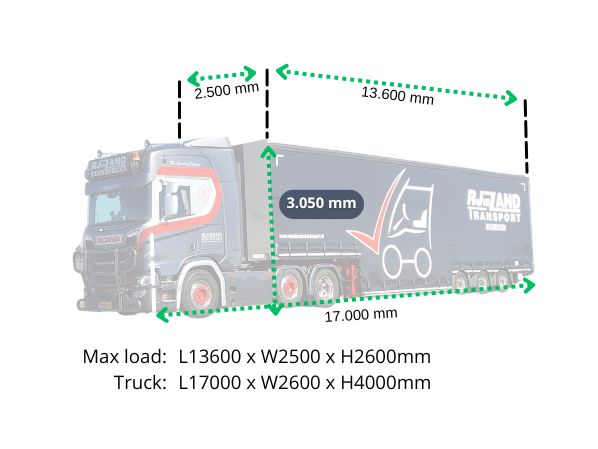Used wide belt sanders
StocklistAre you looking for a used wide belt sander? A wide belt sander is an essential tool for sanding and finishing large surfaces in the woodworking and furniture industries. These machines ensure an even and high-quality finish on materials such as wood, MDF and veneer. Wide belt sanders are ideal for small workshops as well as large production facilities, where speed and precision are key.
At Second Owner, we offer a wide range of used wide belt sanders, suitable for a variety of applications. We sell machines from renowned brands and these are available directly from stock. All our machines can be viewed and tried out in Wijchen. You can easily collect the sanding machine from us, or we can arrange delivery to your location.
Buy a used wide belt sander from Second Owner
With a wide belt sander, you can easily sand wider objects and panels. In addition, you can use different programmes for different sanding results. Texture sanding, brushing or simply smooth sanding. We supply these sanders directly from stock, above you can find them by brand and year of manufacture.
Advantage of a used sanding machine
A previously used wide belt sander also definitely has its advantages:
- Quality
- Direct delivery
- Trade-in possibilities
Quality
Second Owner inspects all incoming sanders. Any repairs or adjustments are made to ensure you always get a perfectly functioning machine. You are welcome to see and test our machines in action to ensure you make the right choice.
Direct delivery
Second Owner sells machines from stock, which means we can deliver them quickly. In many cases, we can put your wide belt sander on transport immediately. This allows you to switch quickly and optimise your production capacity.
Trade-in possibility
Do you have a used wide belt sander that you want to sell? Or has your machine become obsolete and you want to trade it in for another one? Second Owner also buys in other industrial machines, such as metalworking machines, woodworking machines and material handling equipment, even if the purchase price exceeds. Discuss the possibilities with us!
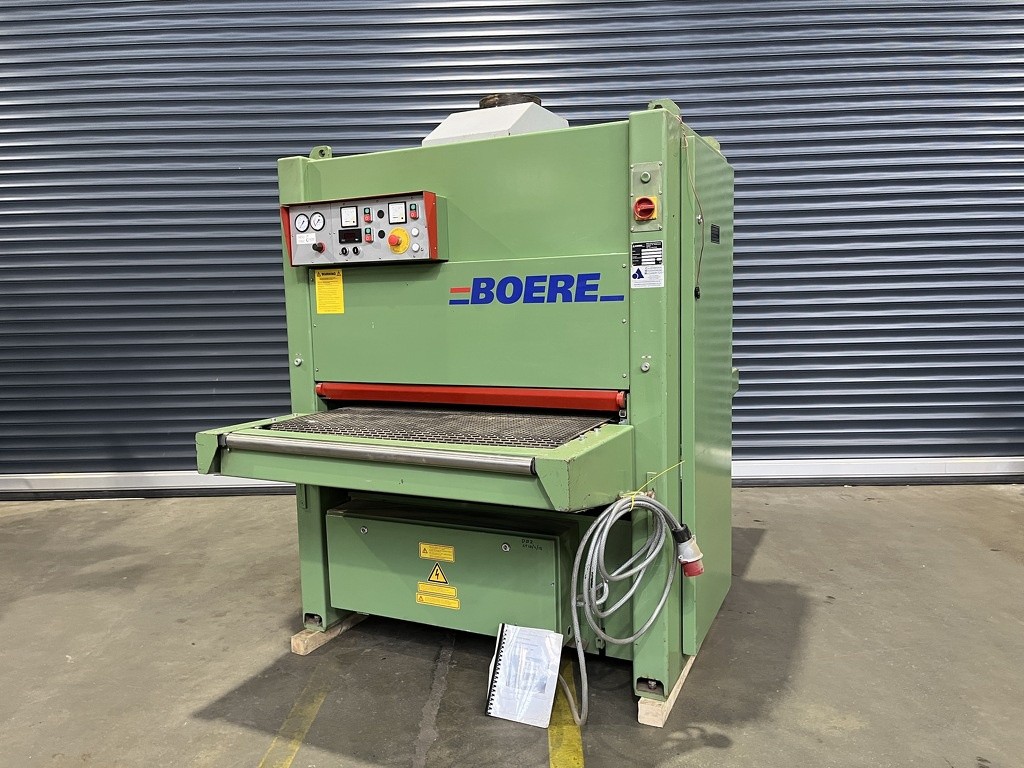
How to choose the right wide belt sander
A wide belt sander comes in different sizes and designs, depending on your specific needs. How do you choose the right wide belt sander for your business? We explain key specifications for you after the available brands (below), so you can quickly select a suitable machine.
- SCM: known for its reliable and innovative sanders for both small and large production environments.
- DMC: produces high-quality wide belt sanders with advanced technology for precise finishing.
- Butfering: known for its durable and powerful machines, ideal for intensive use.
- Costa: provides versatile sanders suitable for a variety of applications.
Please use the filters on this page to make a quick selection.
Price range used sanders
| Type of sander | From | To | New price |
|---|---|---|---|
| Basic wide belt sander | € 10,000 | € 25,000 | ≈€ 40.000 |
| Large wide belt sander | € 25,000 | € 60,000 | ≈€ 90.000 |
| Advanced wide belt sander | € 60,000 | € 120,000 | ≈€ 200.000 |
At Second Owner, you are assured of a reliable sander, with fast delivery and excellent service.
Do you want to buy a used wide belt sander?
You can easily contact us via info@secondowner.com, via +31 655 855 207 or via the quote button at the sander you are interested in. We are happy to receive you by appointment to view one of our machines. That way, we can prepare the machine for you in advance. After your purchase, we can arrange transport for you, but you also have the option of picking up the machine yourself.
Would you like to sell a wide belt sander?
Do you have a wide belt sander you want to sell us? Has your wide belt sander become obsolete or do you want to trade it in for another one? We will gladly buy your 2nd hand wide belt sander and get in touch with you. If you would like to fill in the I want to sell form or contact us directly by phone +31 655 855 207
Lexicon wide belt sander
Specifications of wide belt sander
A wide belt sander is an essential tool for sanding and finishing large surfaces in the woodworking and furniture industries. These machines ensure an even and high-quality finish on materials such as wood, MDF and veneer. Wide belt sanders are ideal for both small workshops and large production facilities, where speed and precision are key. How do you choose the right sander for your business? We explain the main specifications for you, so you can quickly select a suitable machine.
| Specification | Options/unit | At Second Owner |
|---|---|---|
| Working width | 650 - 1,650 mm | 1,100 mm |
| Number of sanding aggregates | 1 - 4 | 2 |
| Sanding belt speed | 15 - 30 m/s | 20 m/s |
| Motor power | 10 - 75 kW | 15 - 30 kW |
| Belt dimensions | 2,000 x 650 mm - 2,620 x 1,650 mm | 2,620 x 1,100 mm |
| Operation | Manual / Automatic | Automatic |
| CNC controlled | Yes / No | No |
| Digital readout | Yes / No | Yes |
Working width
The working width determines the maximum width of the workpiece that can be sanded by the machine. Larger working widths are essential for larger panels and sheets.
Number of sanding aggregates
Sanding aggregates are the parts responsible for the actual sanding process. More sanding aggregates ensure a more precise finish, with both coarse and fine sanding possible in one pass.
Sanding aggregates in wide belt sanders
Sanding aggregates are the different sections in a wide belt sander that are responsible for the actual sanding process. Depending on the type of machine and the number of aggregates, different finishes can be achieved in one pass. The number and types of aggregates are crucial for the efficiency, quality and versatility of the sander. Here is an overview of the different types of sanding aggregates and their functions:
1. Calibre aggregate (Calibration aggregate)
This type of aggregate is used for coarse sanding and calibrating workpieces. The purpose of calibrating is to remove excess material and create a uniform thickness across the entire surface of the workpiece.
Application
Ideal for flattening rough materials or removing large unevennesses.
Sanding belt
Mostly equipped with a coarse sanding belt to quickly remove material.
Material
Often used for solid wood or MDF panels.
2. Combination aggregate
A combination aggregate usually consists of both a contact roller and a sanding shoe, making it a versatile option. It is suitable for both calibrating and fine sanding in one pass.
Application
Both coarse and fine sanding of the workpiece, depending on the settings.
Sanding belt
A medium to fine sanding belt for a balance between material removal and surface finish.
Material
Suitable for wood, veneer, and other sheet materials.
3. Contact roller aggregate
This is one of the most common aggregates and consists of a fixed roller that makes contact with the workpiece. The contact roller aggregate is used for calibrating and coarse sanding.
Application
Great sanding and calibration of thick materials.
Sanding belt
Fitted with a coarse sanding belt for removing large amounts of material.
Material
Suitable for solid wood, chipboard, plywood, and MDF.
4. Sanding shoe (Finishing Pad) Aggregate
A sanding pad is mainly used for fine sanding. Instead of a fixed roller, a sanding shoe has a flexible pad that presses evenly on the surface. This ensures an accurate and high-quality finish.
Application
For finishing and fine sanding of the workpiece, such as smoothing veneers or polishing the top layer.
Sanding belt
Fitted with a fine sanding belt for a smooth and high-quality finish.
Material
Suitable for veneers, wood and MDF.
5. Brush aggregate
This type of aggregate uses rotating brushes instead of sanding belts and is mainly used for smoothing and cleaning the surface after sanding.
Application
Suitable for the final stage of the sanding process to polish the surface and get rid of sanding dust.
Sanding belt
No sanding belt, but brushes that clean and smooth the surface.
Material
Suitable for all types of materials that have been sanded, such as wood, MDF, and veneer.
6. Cross-belt Aggregate
A cross-belt aggregate has a sanding belt that moves perpendicular to the workpiece feed. This type of aggregate is used for sanding cross-belts and correcting small imperfections.
Application
Specifically designed for sanding wood with cross-belts or for removing scratches and unevennesses in difficult directions. Specifically designed for sanding wood with cross-belts or for removing scratches and unevennesses in difficult directions.
Sanding belt
Fine sanding belt for sanding transverse fibres smooth and removing unevennesses.
Material
Preferably suitable for wooden panels and veneers.
Importance of the right number and type of aggregates
The right number and type of sanding aggregates depends on the application and the desired finish. For simple surfaces, a machine with one or two aggregates is often sufficient. For complex and high-end finishes, such as in the furniture or interior industries, machines with several aggregates (e.g. three or four) are needed. Combining calibrating, coarse sanding and fine sanding in one pass saves time and delivers higher quality. Conclusion: wide belt sanders with multiple sanding aggregates offer more flexibility, better finishing capabilities and higher production speeds. The choice of the number and type of aggregates depends on your specific production requirements and the finish you want to achieve.
Sanding belt speed
The speed of the sanding belt affects the speed of sanding and the quality of the finish. Higher speeds are suitable for larger production lines, while lower speeds offer more control for precision work.
Motor power
The motor power of the wide belt sander determines the force with which the sanding process is carried out. Heavier motors are needed for intensive use and sanding thicker materials.
Sanding belt size
The size of the sanding belt determines the durability of the sander and the efficiency of the sanding process. Larger sanding belts last longer and reduce downtime for belt changes.
Operation
Broad belt sanders can be operated manually or automatically. Automatic machines ensure a consistent finish and are more efficient in environments with high production demands.
